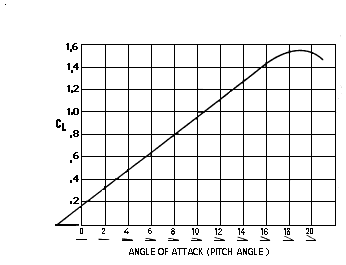Symmetrical airfoils.

These airfoils have been in use for quite a while. Besides America's cup catamarans, there is a number of windsurfing sail designers who invested considerable amount of time in these profiles. Let's take a look at CFD image and see what is going on around these profiles. This study, just like previous teardrop post, is based on 20 degree angle of incidence and 35 kt air velocity. Colors on wing surface and strings correspond to static air pressure, background colors correspond to air velocity magnitude.

Note, that compare to teardrop profile ,maximum air velocity around airfoil is much higher. This is very typical for full bodied airfoils. We'll come back to this later. Outer wing surface responsible for about 70% of lift, while windward, lower surface, generates remaining 30%. Because outer surface on thick and thing airfoils identical, most of our study is based on lower surface and it's influence. As you can see on picture above most air pressure of lower surface concentrated very close to leading edge. Let's take a closer look.

This is same profile and same scenario just from different perspective, view from the top. High air velocity (red) located above airfoil. As we know, fast moving air has low pressure thus create suction (lift) above airfoil. Lower surface has slower moving air, about 4 m/s, especially in front, where leading edge is. Slow air corresponds to high pressure. Pocket of high pressure will apply force to the curvature of the wing surface at 90 degree vector. Because lower surface of symmetrical profile has aggressive curvature, vector of lift will be pointed back. Image below shows same study from top view with strings, where strings colored in static pressure color chart. Its clearly visible that high pressure "cushion" is right under lading edge.

For any airfoil to be able create more lift, it needs more outer curvature. But if airfoil is symmetrical, it means more high pressure cushion under and in front ,resulting higher vector of lift pointed more backward. These airfoils will work good only in conditions were combined vector of lift will be pointed forward, (in other words) when drag and lift pointed in the same direction. In any other scenario air cushion under leading edge will act as a brake. No wonder AC72 designers bragging how fast their cat goes steep downwind. As for windsurfing, these airfoils proven to be not efficient. In my next blog post, we will take a look side by side at asymmetrical, full body airfoil and curved plate profile (traditional windsurfing sail) with angle of incidence 50 degrees.



















